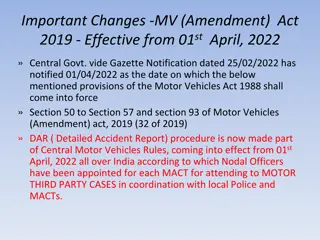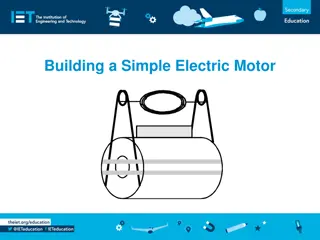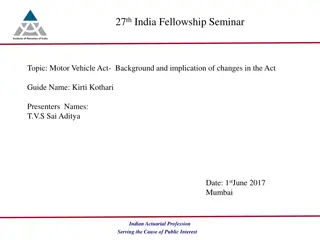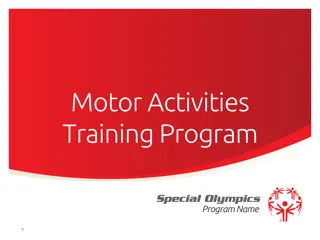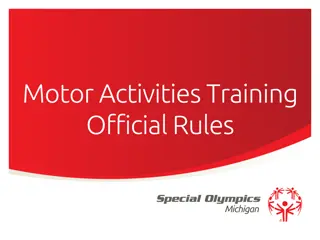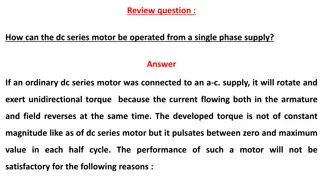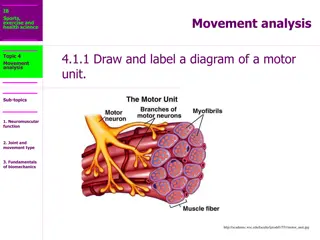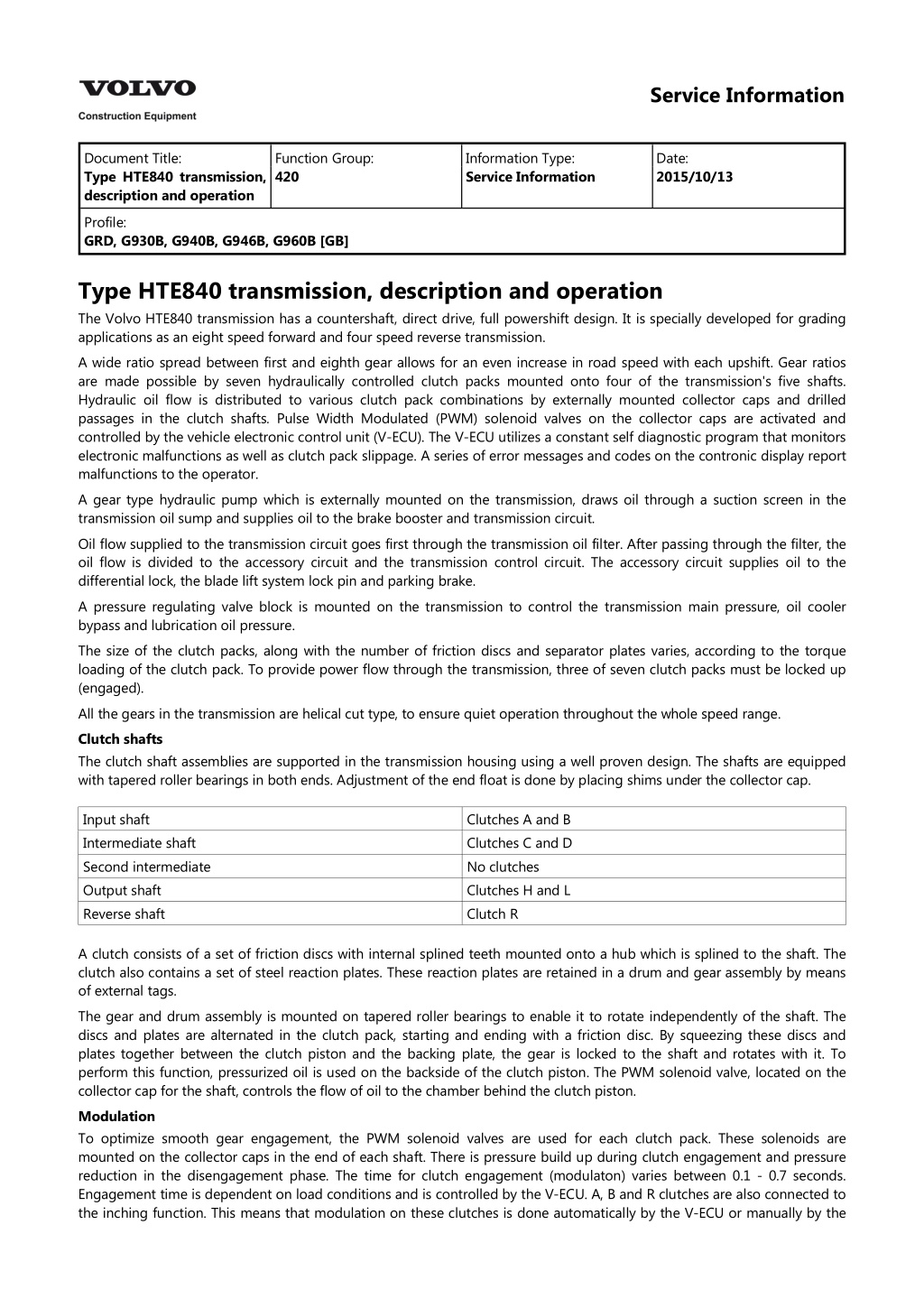
VOLVO G930B MOTOR GRADER Service Repair Manual Instant Download
Please open the website below to get the complete manualnn//
Download Presentation

Please find below an Image/Link to download the presentation.
The content on the website is provided AS IS for your information and personal use only. It may not be sold, licensed, or shared on other websites without obtaining consent from the author. Download presentation by click this link. If you encounter any issues during the download, it is possible that the publisher has removed the file from their server.
E N D
Presentation Transcript
Service Information Document Title: Type HTE840 transmission, description and operation Function Group: 420 Information Type: Service Information Date: 2015/10/13 Profile: GRD, G930B, G940B, G946B, G960B [GB] Type HTE840 transmission, description and operation The Volvo HTE840 transmission has a countershaft, direct drive, full powershift design. It is specially developed for grading applications as an eight speed forward and four speed reverse transmission. A wide ratio spread between first and eighth gear allows for an even increase in road speed with each upshift. Gear ratios are made possible by seven hydraulically controlled clutch packs mounted onto four of the transmission's five shafts. Hydraulic oil flow is distributed to various clutch pack combinations by externally mounted collector caps and drilled passages in the clutch shafts. Pulse Width Modulated (PWM) solenoid valves on the collector caps are activated and controlled by the vehicle electronic control unit (V-ECU). The V-ECU utilizes a constant self diagnostic program that monitors electronic malfunctions as well as clutch pack slippage. A series of error messages and codes on the contronic display report malfunctions to the operator. A gear type hydraulic pump which is externally mounted on the transmission, draws oil through a suction screen in the transmission oil sump and supplies oil to the brake booster and transmission circuit. Oil flow supplied to the transmission circuit goes first through the transmission oil filter. After passing through the filter, the oil flow is divided to the accessory circuit and the transmission control circuit. The accessory circuit supplies oil to the differential lock, the blade lift system lock pin and parking brake. A pressure regulating valve block is mounted on the transmission to control the transmission main pressure, oil cooler bypass and lubrication oil pressure. The size of the clutch packs, along with the number of friction discs and separator plates varies, according to the torque loading of the clutch pack. To provide power flow through the transmission, three of seven clutch packs must be locked up (engaged). All the gears in the transmission are helical cut type, to ensure quiet operation throughout the whole speed range. Clutch shafts The clutch shaft assemblies are supported in the transmission housing using a well proven design. The shafts are equipped with tapered roller bearings in both ends. Adjustment of the end float is done by placing shims under the collector cap. Input shaft Intermediate shaft Second intermediate Output shaft Reverse shaft Clutches A and B Clutches C and D No clutches Clutches H and L Clutch R A clutch consists of a set of friction discs with internal splined teeth mounted onto a hub which is splined to the shaft. The clutch also contains a set of steel reaction plates. These reaction plates are retained in a drum and gear assembly by means of external tags. The gear and drum assembly is mounted on tapered roller bearings to enable it to rotate independently of the shaft. The discs and plates are alternated in the clutch pack, starting and ending with a friction disc. By squeezing these discs and plates together between the clutch piston and the backing plate, the gear is locked to the shaft and rotates with it. To perform this function, pressurized oil is used on the backside of the clutch piston. The PWM solenoid valve, located on the collector cap for the shaft, controls the flow of oil to the chamber behind the clutch piston. Modulation To optimize smooth gear engagement, the PWM solenoid valves are used for each clutch pack. These solenoids are mounted on the collector caps in the end of each shaft. There is pressure build up during clutch engagement and pressure reduction in the disengagement phase. The time for clutch engagement (modulaton) varies between 0.1 - 0.7 seconds. Engagement time is dependent on load conditions and is controlled by the V-ECU. A, B and R clutches are also connected to the inching function. This means that modulation on these clutches is done automatically by the V-ECU or manually by the
operator. Inching Inching helps the operator achieve superior control over gear selection and machine speed. Clutches A, B and R can be modulated manually using the inching pedal. This pedal sends an electrical signal to the V-ECU and a current to the PWM solenoids. SA, SB and SR is related to the pedal angle. In case the contronic monitoring system finds a clutch pack slipping, the nominal clutch pressure of 1.35 MPa (13.5 bar, 196 psi) is raised up to a maximum system pressure of 1.6 MPa (16 bar, 232 psi).
Service Information Document Title: Type transmission, and operation Function Group: 420 Information Type: Service Information Date: 2015/10/13 HTE1160 description Profile: GRD, G930B, G940B, G946B, G960B [GB] Type HTE1160 transmission, description and operation The Volvo HTE1160 transmission has a countershaft, direct drive full powershift design. It is specially developed for grading applications as an eleven speed forward and six speed reverse transmission. A wide ratio spread between first and eleventh gear allows for an even increase in road speed with each upshift. Gear ratios are made possible by eight hydraulically controlled clutch packs mounted onto the five shafts of the transmission. Hydraulic oil flow is distributed to various clutch pack combinations by externally mounted collector caps and drilled passages in the clutch shafts. Pulse Width Modulated (PWM) solenoid valves on the collector caps are activated and controlled by the Vehicle electronic control unit (V-ECU). The V-ECU utilizes a constant self diagnostic program that monitors electrical malfunctions as well as clutch pack slippage. A series of error messages and codes on the contronic display report malfunctions to the operator. A gear type hydraulic pump is externally mounted on the transmission and draws oil through a suction screen in the transmission oil sump. It also supplies oil to the brake booster circuit and the transmission circuit. Oil flow supplied to the transmission circuit first passes through the transmission oil filter. After the filter, the oil flow is divided to the accessory circuit and the transmission control circuit. The accessory circuit supplies oil to the differential lock, lock pin cylinder and parking brake. The pressure regulating valve block is mounted on the transmission to control the main pressure , oil cooler bypass and lubrication oil pressure. The size of the clutch packs, along with the number of friction discs and separator plates varies according to the torque loading of the clutch pack. To provide power flow through the transmission, three of eight clutch packs must be engaged. All the gears in the transmission are helical cut type to achieve quiet operation throughout the entire speed range. Clutch shafts The clutch shaft assemblies are supported in the transmission housing. The shafts are equipped with tapered roller bearings in both ends. The adjustment of the end float is done with shims under the collector cap. Input shaft Intermediate shaft Second intermediate Output shaft Reverse shaft Clutches A and B Clutch D Clutches E and F Clutches H and L Clutch R A clutch consists of a set of friction discs with internal spline teeth mounted onto a hub which is splined to the shaft. A set of reaction plates are retained in a gear and drum assembly. The gear and drum assembly is mounted on tapered roller bearings to enable it to rotate independently of the shaft. The discs and plates are alternated in the clutch pack starting and ending with a friction disc. By squeezing these discs and plates together between the clutch piston and the backing plate, the gear is locked to the shaft and rotates with it. To perform this function, pressurized oil is used on the back side of the clutch piston. Modulation To optimize smooth gear engagement, the PWM solenoid valves are used for each clutch pack. The PWM solenoid valve located on the collector cap for the clutch shaft, controls the flow of oil to the chamber behind the clutch piston. The time for clutch engagement (modulation) varies between 0.1 - 0.7 seconds. Engagement time is dependent of load conditions and is controlled by the V-ECU. A, B and R clutches are also connected to the inching function. That means that modulation on these clutches is done automatically by the V-ECU or manually by the operator. Inching
https://www.ebooklibonline.com Hello dear friend! Thank you very much for reading. Enter the link into your browser. The full manual is available for immediate download. https://www.ebooklibonline.com
To give the operator superior control over gear selection and machine speed, clutches A, B and R can be modulated manually using the inching pedal. This pedal sends an electrical signal to the V-ECU. A current is sent out to the PWM solenoids (SA, SB, SR) which is related to the angle of the pedal. Slippage control In the event that the contronic monitoring system finds a clutch pack slipping, the nominal clutch pressure 1.35 MPa (13.5 bar, 196 psi) is raised up to maximum system pressure of 1.6 MPa (16 bar, 232 psi).
Service Information Document Title: Transmission HTE840/HTE1160, description and operation Function Group: 421 Information Type: Service Information Date: 2015/10/13 control Profile: GRD, G930B, G940B, G946B, G960B [GB] Transmission control HTE840/HTE1160, description and operation A pressure regulator valve block is mounted on the transmission. A gear type hydraulic pump, which is externally mounted on the transmission supplies oil to the valve, oil cooler bypass valve and a lubrication pressure backup valve. It supplies oil pressure to all of the clutch shafts. It also has a pressure sensor and a temperature sensor. Figure 1 A. B. C. D. E. F. G. H. I. J. K. L. M. N. Pump inlet (from transmission oil filter) To R and A-B clutch shafts To C-D and E-F clutch shafts Auxiliary outlet To H-L clutch shaft Main pressure relief valve 1.6 MPa (16 bar, 232 psi) Oil cooler bypass valve 1 MPa (6 bar, 85 psi) Lubrication pressure backup valve 0.2 MPa (2 bar, 35 psi) To transmission oil cooler To lubrication manifold From transmission oil cooler Pressure sensor From brake booster (return) Temperature sensor
HTE840 Transmission solenoids Clutch pack A B C D H L R Solenoid PWM4205 PWM4206 PWM4207 PWM4208 PWM4210 PWM4211 PWM4212 Solenoid combinations - HTE840 Gear F1/R1 F2 F3/R2 F4 F5/R3 F6 F7/R4 F8 Forward A-C-L B-C-L A-D-L B-D-L A-C-H B-C-H A-D-H B-D-H Reverse R-C-L R-D-L R-C-H R-D-H HTE1160 Transmission solenoids Clutch pack A B D E F H L R Solenoid PWM4205 PWM4206 PWM4208 PWM4209 PWM4207 PWM4210 PWM4211 PWM4212 Solenoid combinations - HTE1160 Gear F1/R1 F2 F3/R2 F4 F5/R3 F6 F7/R4 F8 F9/R5 F10 F11/R6 Forward A-E-L B-E-L A-D-L B-D-L A-F-L B-F-L B-E-H A-D-H B-D-H A-F-H B-F-H Reverse R-E-L R-D-L R-F-L R-E-H R-D-H R-F-H
Service Information Document Title: Transmission system, operation Function Group: 421 Information Type: Service Information Date: 2015/10/13 hydraulic description and Profile: GRD, G930B, G940B, G946B, G960B [GB] Transmission hydraulic system, description and operation A gear type hydraulic pump, which is externally mounted on the transmission draws oil through a suction screen in the transmission oil sump. The transmission pump supplies oil to the brake booster circuit and the transmission circuit. Oil flow supplied to the transmission circuit first goes through the transmission oil filter. Once oil passes through the oil filter, it is divided and sent through the combination valve and transmission control circuit. The combination valve supplies oil to the differential lock, the lock pin cylinder and the parking brake. A pressure regulating valve block is mounted on the transmission to control the transmission main pressure, oil cooler bypass and the lubrication oil pressure.
Service Information Document Title: Transmission, locations Function Group: 421 Information Type: Service Information Date: 2015/10/13 component Profile: GRD, G930B, G940B, G946B, G960B [GB] Transmission, component locations HTE840 Gear Clutch A B C D H L R Lube Forward 1 2 3 4 5 6 7 8 Neutral Reverse -1 -2 -3 -4 1. 2. 3. 4. 5. 6. 7. 8. Lower the moldboard and all attachments, block all wheels and apply the service brake. Transmission oil must be at operating temperature. Install gauges in the test ports. Run the engine at minimum engine speed. Depress the inching clutch and select first gear, forward mode. Record the pressure in the appropriate boxes for all clutches. Repeat steps 4 and 5 with the engine at maximum speed. Repeat steps 4 through 6 for each successive gear. The difference between the maximum speed and idle speed pressures for any one clutch should not exceed 69 kPa (0.7 bar, 10 psi). Check the lube pressures against the specifications. Refer to 030 Transmission, specifications (HTE840) 9. .
Figure 1 HTE840 transmission component locations 1. Attenuator in the test port locations
HTE840 transmission solenoids Clutch pack A B C D H L R Solenoid PWM4205 PWM4206 PWM4207 PWM4208 PWM4210 PWM4211 PWM4212 HTE840 solenoid combinations Gear F1/R1 F2 F3/R2 F4 F5/R3 F6 F7/R4 F8 Forward A-C-L B-C-L A-D-L B-D-L A-C-H B-C-H A-D-H B-D-H Reverse R-C-L R-D-L R-C-H R-D-H
Service Information Document Title: Transmission, locations Function Group: 421 Information Type: Service Information Date: 2015/10/13 component Profile: GRD, G930B, G940B, G946B, G960B [GB] Transmission, component locations HTE1160 Gear Clutch A B D E F H L R Lube Forward 1 2 3 4 5 6 7 8 9 10 11 Neutral Reverse -1 -2 -3 -4 -5 -6
1. 2. 3. 4. 5. 6. 7. 8. Lower the moldboard and all attachments, block all wheels and apply the service brake. Transmission oil must be at operating temperature. Install gauges in the test ports. Run the engine at minimum engine speed. Depress the inching clutch and select first gear, forward mode. Record the pressure in the appropriate boxes for all clutches. Repeat steps 4 and 5 with the engine at maximum speed. Repeat steps 4 through 6 for each successive gear. The difference between the maximum speed and idle speed pressures for any one clutch should not exceed 69 kPa (0.7 bar, 10 psi). Check the lube pressures against the specifications. Refer to 030 Transmission, specifications (HTE1160) 9. .
Figure 1 HTE1160 transmission component locations 1. Attenuator in the test port locations HTE1160 transmission solenoids Clutch pack A B D E F H L R Solenoid PWM4205 PWM4206 PWM4208 PWM4209 PWM4207 PWM4210 PWM4211 PWM4212 HTE1160 solenoid combinations Gear F1/R1 F2 F3/R2 F4 F5/R3 F6 F7/R4 F8 F9/R5 F10 F11/R6 Forward A-E-L B-E-L A-D-L B-D-L A-F-L B-F-L B-E-H A-D-H B-D-H A-F-H B-F-H Reverse R-E-L R-D-L R-F-L R-E-H R-D-H R-F-H
Suggest: For more complete manuals. Please go to the home page. https://www.ebooklibonline.com If the above button click is invalid. Please download this document first, and then click the above link to download the complete manual. Thank you so much for reading
Service Information Document Title: Transmission, pressure Function Group: 421 Information Type: Service Information Date: 2015/10/13 check oil Profile: GRD, G930B, G940B, G946B, G960B [GB] Transmission, check oil pressure Op nbr 421-002 11666052 Pressure gauge 936445 Testing nipple 936446 Testing nipple 191 Service position 1. Place machine in the service position. Refer to NOTE! Do not shut off the battery disconnect switch or allow the machine to cool down fully. The engine, transmission and hydraulic systems should be at normal working temperature during the testing procedure. NOTE! If the machine cannot be road tested to obtain the pressure readings, it will be necessary to raise the rear of the machine and support the tandem drive wheels elevated off the ground. This will allow you to engage the transmission and run the machine at the normal working temperatures while recording the working pressures. Refer to . 191 Safety when lifting and supporting complete machine 191 Safety rules when servicing and . 2. Locate the test port attenuator nipples on the upper left side of the transmission. Access is gained through the opening between the cab and the frame on the left of the machine. Figure 1 Test ports - attenuator locations 3. Remove one of the attenuator nipples and install an appropriate size testing nipple into the valve block.
Figure 2 Test nipple with hose to gauge NOTE! Use 936445 Testing nipple if connecting directly into the valve block. Use 936446 Testing nipple if connecting into the attenuator nipple. 4. Connect 11666052 Pressure gauge to the test nipple with the hose supplied with the gauge. Figure 3 Volvo pressure test gauge 5. Start the engine and engage the differential lock. 6. Engage the transmission and run the machine at the normal working temperature in the specified gear while recording the working pressures at the test port according to the specification table. 7. Shut down the machine. Remove the test gauge nipple and hose line, then install the attenuator into the test port.
https://www.ebooklibonline.com Hello dear friend! Thank you very much for reading. Enter the link into your browser. The full manual is available for immediate download. https://www.ebooklibonline.com




